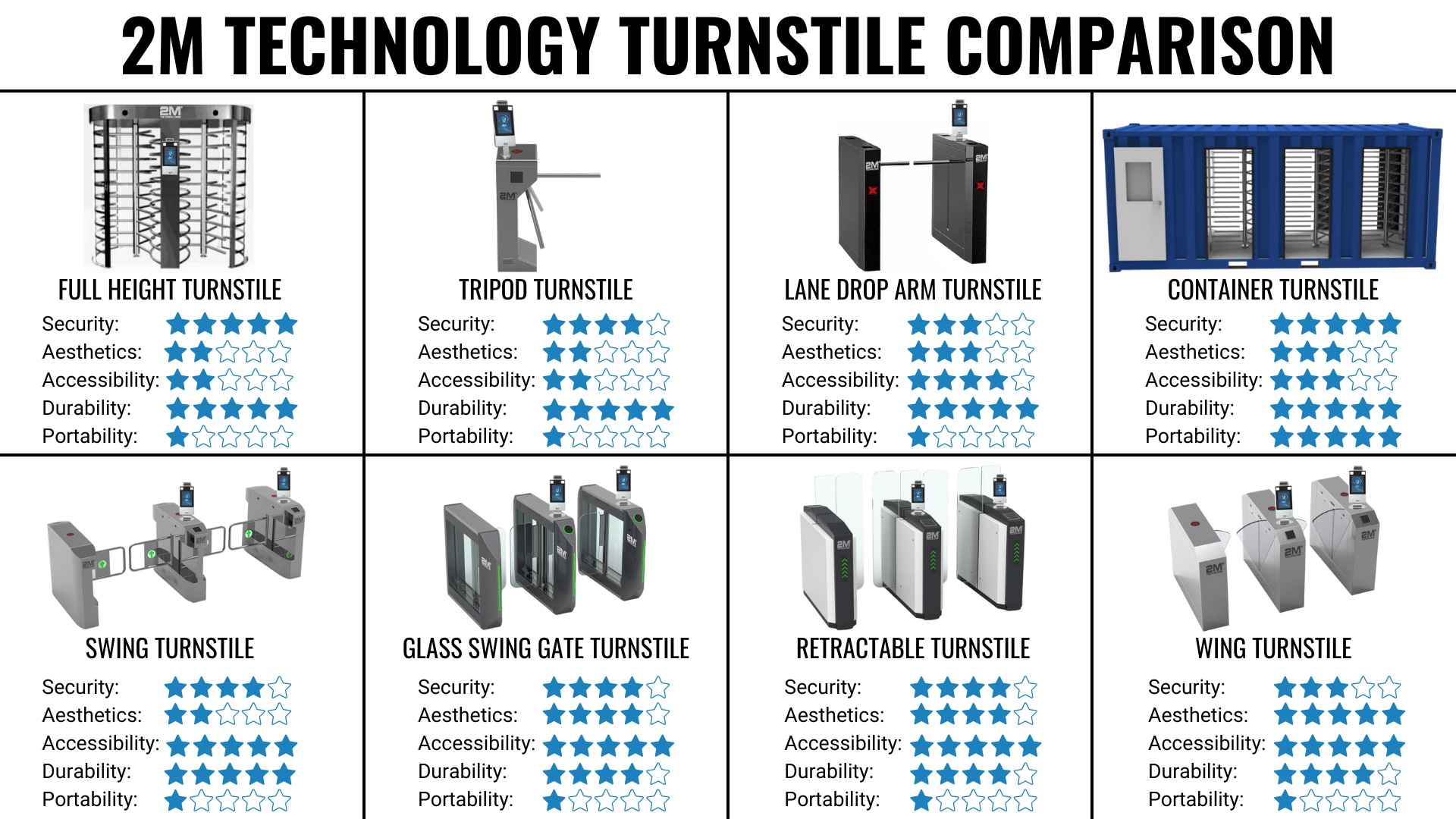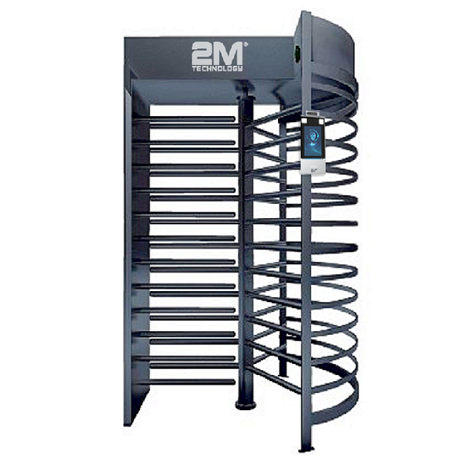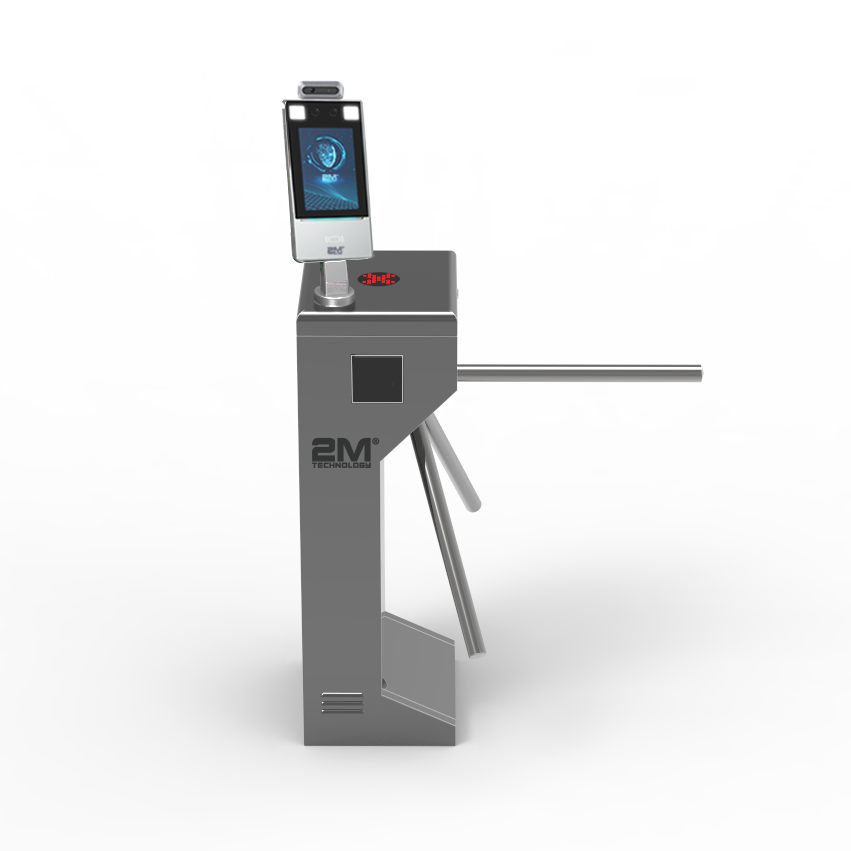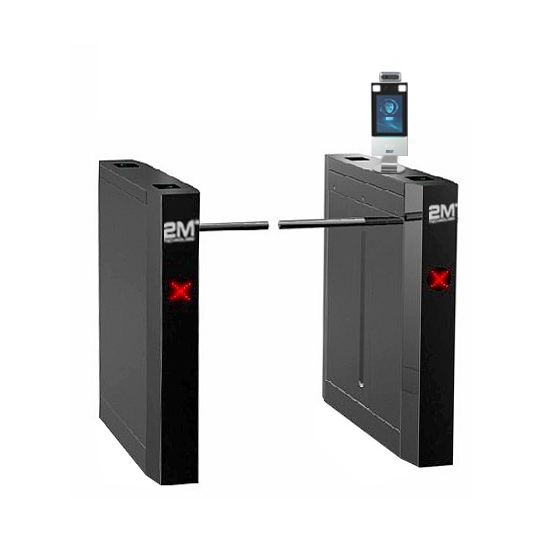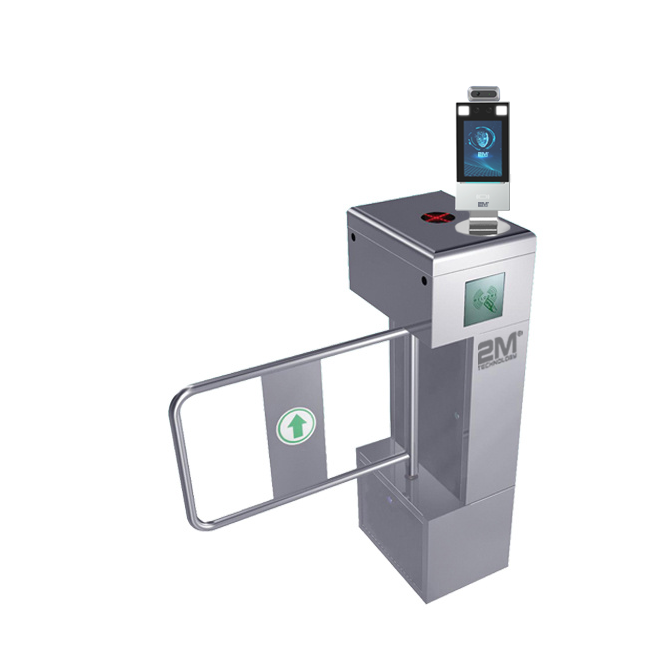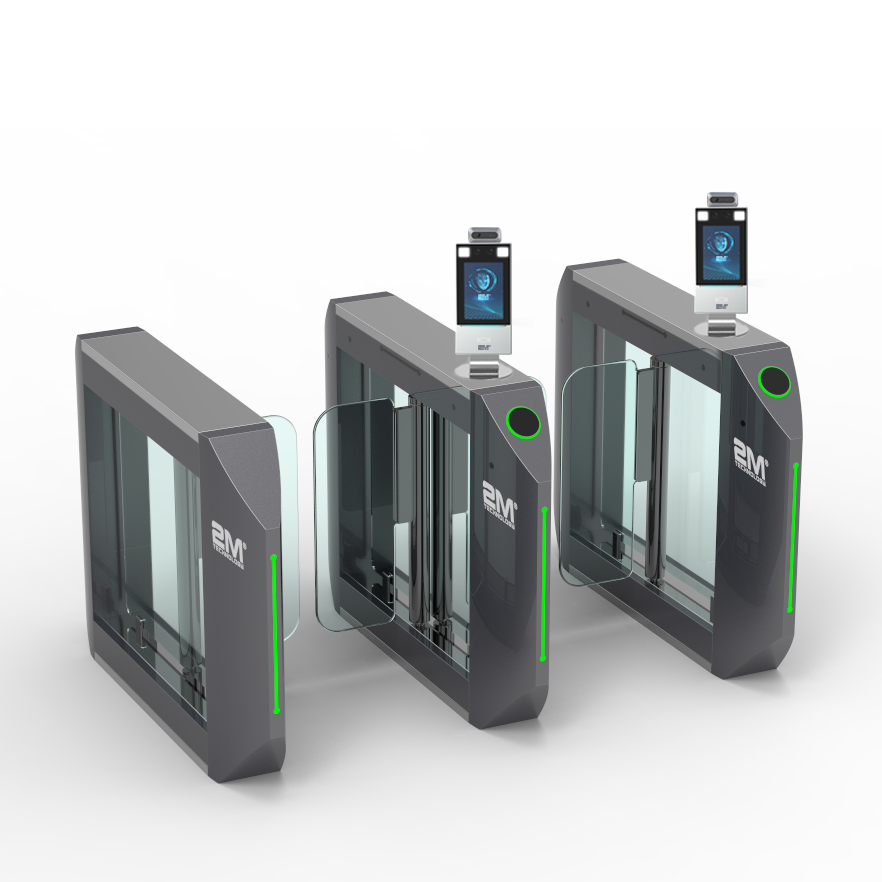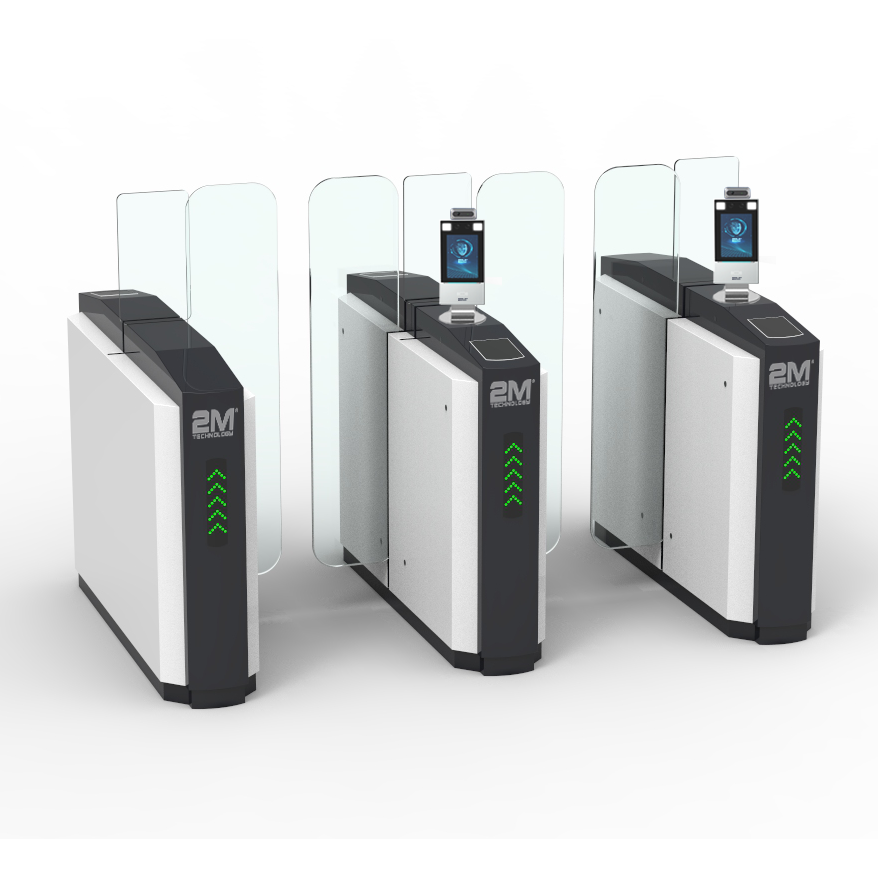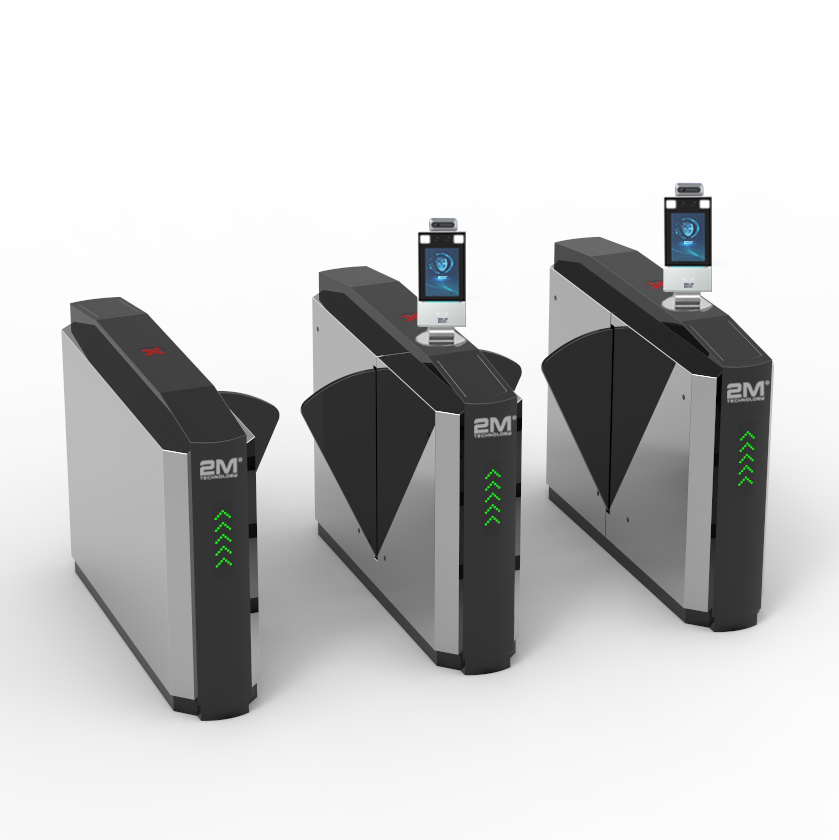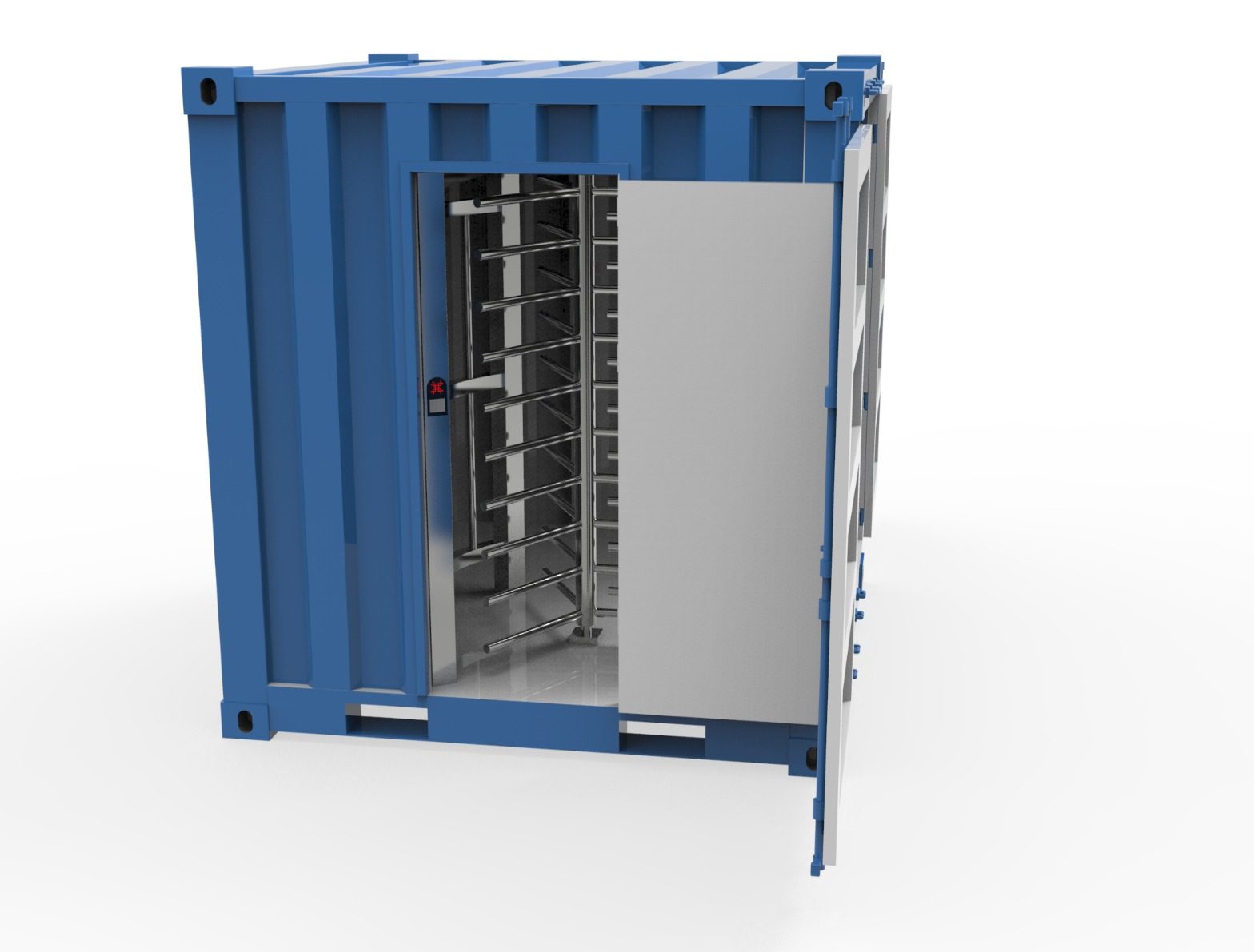With numerous types and styles of turnstiles available, selecting the right one can be overwhelming. This guide breaks down the differences between each style and their ideal applications. By understanding each type, businesses and organizations can find the best option for their access control needs. Whether your priority is maximum security, smooth traffic flow, or aesthetics, this guide will help you make an informed decision.
Mechanical Access Control Turnstiles
There are two main types of access control turnstiles: mechanical and optical. The difference between the two is how they operate. Mechanical turnstiles have rotating arms or barriers that users must push to pass through. After each person passes, the arms automatically lock again, preventing the next person from entering without proper authorization.
Full-Height Turnstiles
Full-height turnstiles provide the highest level of security since their barriers extend from floor to ceiling. This design makes it impossible for anyone to climb over or crawl under. The barriers are usually made from durable stainless steel so they’re highly resistant to tampering and vandalism. However, these turnstiles may cause issues for people who use wheelchairs or have mobility impairments. The opening widths are not adjustable, and they require manual effort to push through. Full-height turnstiles are best for high-security locations like government buildings, correctional facilities, and military bases.
Tripod Turnstiles
Tripod turnstiles get their name from the three rotating arms that block unauthorized individuals from entering. Like full-height turnstiles, these barriers are typically made of stainless steel, but they stand at waist height. Compared to other styles, they are more compact since they require only one cabinet and the arms don’t extend very far. However, the narrow lanes and rotating arms can make it difficult for people with mobility impairments to pass through. Tripid turnstiles are often seen in places with moderate security needs and heavy pedestrian traffic, such as transit stations, amusement parks, and stadiums.
Optical Turnstiles
Optical turnstiles, also known as speed gates, use infrared sensors to create an invisible barrier across the lane. If someone tries to cross this barrier without authorization, the system triggers an alert. Unlike mechanical turnstiles, they don’t require physical barriers, though they can include them for added security. When access is granted, the invisible beams disconnect, and any physical barriers open to allow passage. Afterward, the beams reconnect, and the barriers reset for the next person.
Lane Drop-Arm Turnstiles
Lane-drop arm turnstiles have two stainless steel arms that retract into their cabinets to permit entry. After a person passes through, the arms rise back into place, blocking further access. These turnstiles have a minimalistic appearance, but they also leave a sizeable gap beneath the arms that people could crawl through. However, they’re hygienic and suitable for individuals with mobility impairments since they don’t require physical contact to operate. They’re commonly found in both outdoor and indoor settings like public buildings, entertainment facilities, and commercial offices.
Swing Turnstiles
Swing turnstiles have one or two panels that swing forward to allow passage in one direction while blocking access from the opposite direction. The lanes are wider than tripod or lane-drop arm turnstiles, so they’re more accessible for people carrying luggage or using wheelchairs. Swing turnstiles can be configured with one or more lanes, depending on the amount of pedestrians. This, combined with their durable stainless steel construction, makes them perfect for areas with high foot traffic such as transportation hubs, sports venues, or stadiums.
Glass Swing Gate Turnstiles
Glass swing gate turnstiles are similar to swing turnstiles, but their panels are made of acrylic or tempered glass instead of stainless steel. Like swing turnstiles, they operate without physical contact, and the lane width can be modified for wheelchair accessibility. They offer the same level of security, but with a more stylish and visually appealing look. Glass swing gate turnstiles are ideal for secure environments where interior design matters, such as corporate offices, hotels, or educational institutions.
Retractable Turnstiles
Retractable turnstiles, like glass swing gate turnstiles, have waist-high barriers made from acrylic or tempered glass. But instead of swinging open, the barriers slide back into their cabinets. The lane widths can be adjusted, and no physical contact is needed to operate, making them suitable for wheelchair users and people with mobility impairments. Configurable for one or more lanes, retractable turnstiles are good for bustling places where aesthetics are important, such as commercial offices, convention centers, and universities.
Wing Turnstiles
Wing turnstiles have barriers made of acrylic or tempered glass that retract into their cabinets to allow passage. The panels have a unique wing shape, offering a modern and contemporary look. Like retractable turnstiles, they are configurable for one or more lanes to accommodate varying levels of pedestrian traffic. With their wider lanes and no physical contact, wing turnstiles offer accessibility for people using wheelchairs or experiencing mobility impairments. They’re best suited for indoor installations in commercial buildings, educational institutions, and upscale hotels.
Container Turnstiles
Container turnstiles are portable units consisting of turnstile units installed inside a CONEX box. They are best for outdoor and temporary locations. Once the event or project is over, the container turnstile can be easily transported to the next location, ready for immediate use. Depending on the needs of the location, any type of turnstile can be installed within the container. For example, full-height turnstiles may be the optimal choice for construction sites where maximum security is needed, while swing turnstiles may be ideal for public events, such as music festivals, where high throughput and accessibility are important.
Access Control Solutions from 2M Technology
Understanding the different types and styles of turnstiles is essential for implementing an effective access control solution that meets your needs. Whether you choose full-height turnstiles for high-security locations or sleek glass swing gate turnstiles for a stylish appearance, each type caters to specific needs and environments. By selecting the right turnstile, you can enhance security, improve pedestrian flow, and make entry accessible for all. Contact the 2M Technology sales team today at +1 (214) 988-4302 or sales@2mtechnology.net to start building your access control solution. Our experts are here to help you choose the best turnstile for your needs and create a custom system tailored to your environment.
